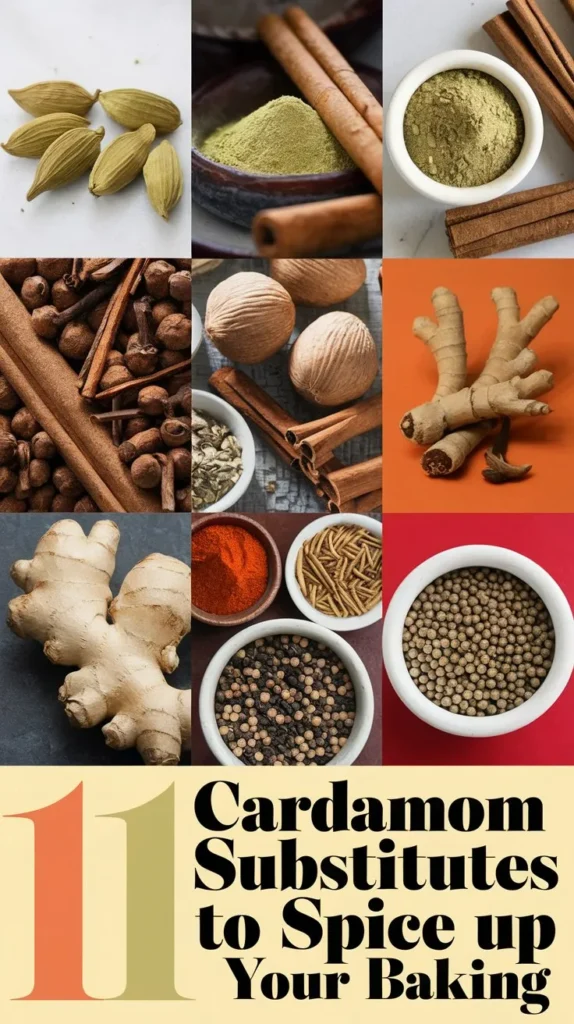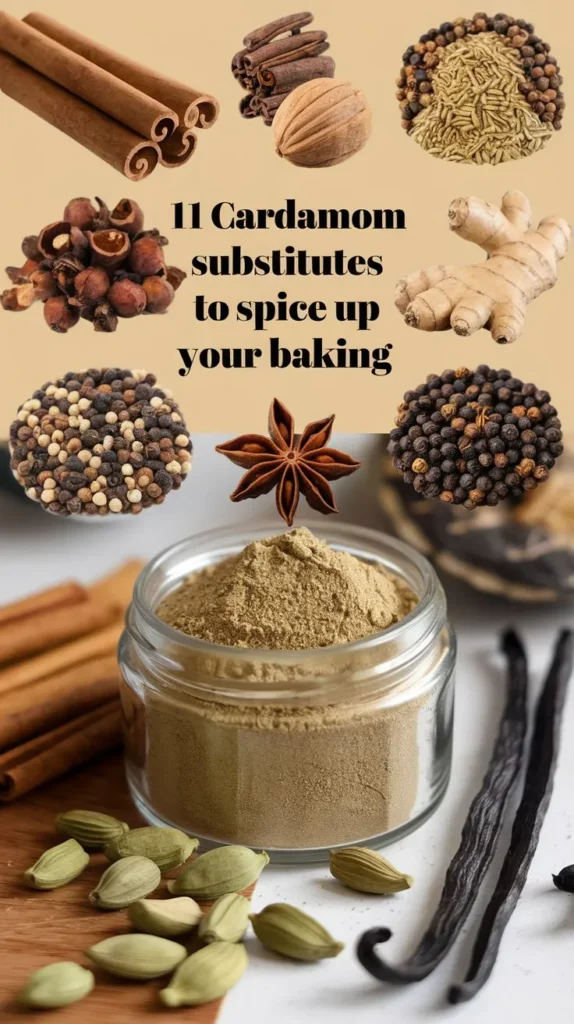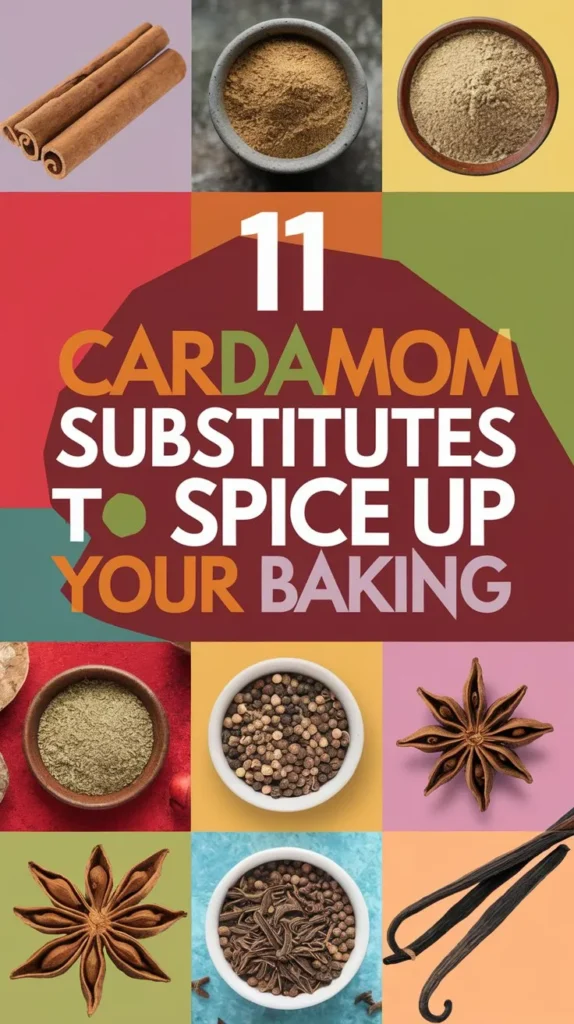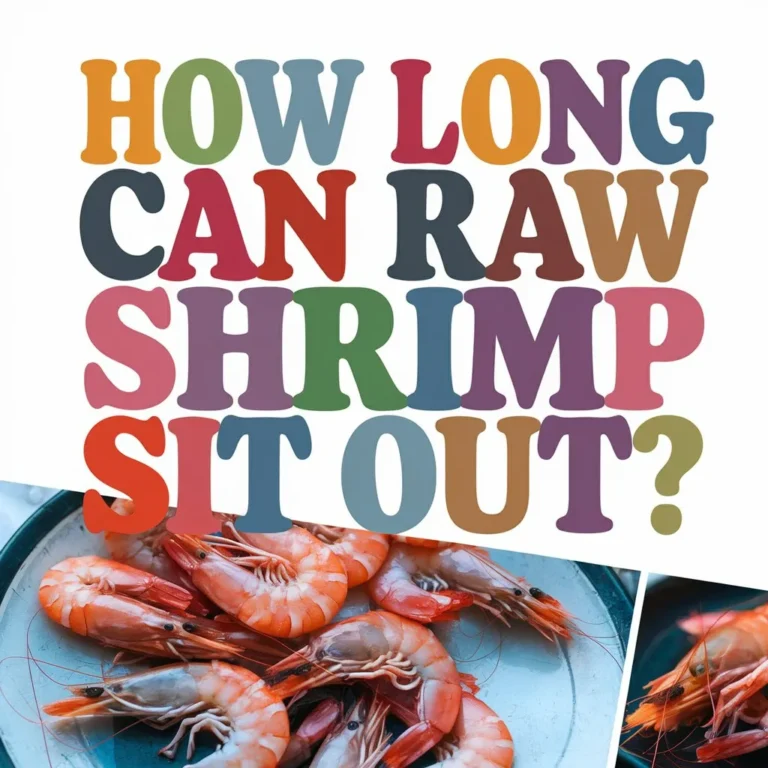11 Cardamom Substitutes to Spice Up Your Baking
You’re in the middle of a recipe, and suddenly you realize you’re out of cardamom. Don’t panic! You can easily substitute it with another spice to add depth and warmth to your baked goods. But which one to choose?
You might be surprised at how well a pinch of cinnamon or nutmeg can replicate cardamom’s sweetness. Or, if you’re feeling adventurous, you could try something entirely new, like galangal or caraway seeds.
The possibilities are endless, and we’re about to explore 11 of them. Which substitute will you discover to be your new favorite?
At a Glance
- Cinnamon, nutmeg, and allspice are warm and sweet spices that can substitute cardamom in baked goods, adding depth and complexity.
- Ginger, cloves, and galangal are pungent and aromatic spices that can add a unique flavor profile to desserts, but use them in moderation.
- Star anise and fennel seeds provide an anise-flavored alternative to cardamom, adding a distinctive licorice flavor to baked goods.
- Caraway seeds offer a unique flavor profile that pairs well with fruit, particularly apples and pears, making them a great addition to pies and tarts.
- When substituting cardamom, start with a small amount and adjust to taste, as different spices have varying levels of potency and flavor intensity.
Cinnamon: A Sweet and Familiar Option
When reaching for a cardamom substitute, your spice rack may already hold the answer in the form of cinnamon.
This sweet and familiar spice has a flavor profile that, although distinct, shares some similarities with cardamom. Cinnamon’s warm, sweet, and slightly spicy notes can complement the sweetness of baked goods, making it a suitable substitute in many recipes.
In traditional baking, cinnamon is often used to add depth and warmth to sweet treats like cakes, cookies, and pastries.
Its robust flavor can help mask the absence of cardamom, especially when used in combination with other spices like ginger and nutmeg. When substituting cinnamon for cardamom, keep in mind that cinnamon has a stronger flavor, so start with a smaller amount and adjust to taste.
In sweet breads and desserts, cinnamon can add a comforting and familiar flavor that will make your baked goods feel like home.
With its versatility and familiarity, cinnamon is an excellent cardamom substitute to have in your arsenal, especially when you’re in a pinch and need a quick solution.
Nutmeg: Warmth in a Pinch
You’re likely familiar with nutmeg’s warm, aromatic flavor from its common use in sweet dishes like pies and custards.
But did you know that nutmeg has a rich history dating back to the 1st century AD, when it was traded along the Silk Road?
Native to the Banda Islands in Indonesia, nutmeg was highly prized for its medicinal and culinary uses.
Today, you can find several nutmeg varieties, each with its unique flavor profile.
The most commonly used is European nutmeg, sourced from Myristica fragrans, which boasts a slightly sweet and bitter taste.
On the other hand, West Indian nutmeg from Myristica otoba has a more delicate, almost sweet flavor.
When substituting cardamom with nutmeg, keep in mind that the latter is generally more potent, so start with a small amount and adjust to taste.
With its warm, comforting flavor, nutmeg is an excellent addition to baked goods, especially sweet breads, cakes, and cookies.
Ginger: Spicy and Invigorating
Add a pinch of warmth to your recipe with ginger, a root that packs a pungent punch.
When substituting cardamom with ginger, you’ll notice a dramatic shift in flavor profile. Ginger’s spicy, invigorating essence will awaken your senses and add depth to your baked goods.
In a ginger benefit analysis, you’ll find that this root not only adds flavor but also provides several health benefits.
It aids digestion, reduces inflammation, and can even alleviate nausea. With its versatility and numerous advantages, ginger is an excellent addition to your spice rack.
When working with ginger, you’ll want to ponder its flavor profile.
Fresh ginger is more pungent and spicy, while dried ginger is sweeter and earthier. You can use either form, depending on the desired intensity and character of your final product.
Start with a small amount, as ginger can quickly overpower other flavors.
As you experiment with ginger, you’ll discover its unique charm and the magic it brings to your baking creations.
Cloves: Pungent and Aromatic
Cloves: Pungent and Aromatic
Whole cloves, with their distinctive, nail-like shape, infuse a pungent, aromatic essence into your baked goods, making them an ideal substitute for cardamom.
As you explore the flavor profile of cloves, you’ll discover a warm, slightly sweet, and intensely aromatic character that pairs perfectly with sweet and savory ingredients.
- Use cloves to add depth to fruit-based desserts, like apple or pear crisps, where their pungency complements the natural sweetness of the fruit.
- Create aromatic pairings by combining cloves with cinnamon, nutmeg, or ginger to evoke a sense of warmth and comfort in your baked goods.
- Experiment with cloves in savory applications, like spiced nuts or sweet potato dishes, to add a surprising and intriguing dimension to your flavor profiles.
Allspice: A Sweet and Savory Blend
While exploring the domain of cardamom substitutes, you may find that the warm, sweet, and spicy undertones of allspice resonate with your culinary vision.
This aromatic spice has a rich history, dating back to the 16th century when it was introduced to Europe from the Caribbean. Allspice, also known as Jamaican pepper, is derived from the dried, unripe fruit of the Pimenta dioica tree.
Allspice varieties differ in their flavor profiles, with some exhibiting more sweetness and others a stronger, more pungent taste.
You can choose from whole, ground, or essential oil forms, each suitable for different recipes and cooking methods. The sweet and savory blend of allspice is particularly well-suited for baked goods, such as pies, cakes, and cookies.
When substituting cardamom with allspice, start with a small amount, as its flavor can quickly overpower other ingredients. With its unique flavor profile and versatility, allspice is an excellent addition to your spice rack, offering endless possibilities for experimentation and creativity in your baking endeavors.
Star Anise: Licorice-Flavored Delight
Your culinary journey through cardamom substitutes continues with star anise, a fragrant spice that brings a distinctive licorice flavor to the table.
This spice has a rich history, dating back to ancient China, where it was used as a digestive aid and breath freshener. Today, star anise is a staple in many global cuisines, particularly in Indian, Middle Eastern, and Chinese cooking.
- There are several varieties of star anise, including Chinese star anise, Indian star anise, and Japanese star anise, each with its unique flavor profile and aroma.
- Star anise is often used in sweet and savory dishes, such as baked goods, stews, and braises, adding depth and warmth to your creations.
- When substituting cardamom with star anise, keep in mind that the latter has a stronger, more pungent flavor, so start with a small amount and adjust to taste.
With its complex flavor and aroma, star anise is an excellent addition to your spice rack, offering endless possibilities for experimentation and innovation in your baking and cooking endeavors.
Fennel Seeds: Anise-Flavored Alternative
As you explore the domain of cardamom substitutes, you’ll discover that fennel seeds offer a unique anise-flavored alternative that can elevate your culinary creations.
Fennel seeds, also known as Foeniculum vulgare, have a rich history dating back to ancient Greece and Rome, where they were used to aid digestion and freshen breath.
Today, fennel seeds are prized for their numerous benefits, including reducing inflammation, improving respiratory health, and supporting healthy digestion.
In baking, fennel seeds can add a warm, sweet, and anise-like flavor to sweet breads, cakes, and cookies. They pair particularly well with citrus flavors like lemon and orange.
When substituting fennel seeds for cardamom, use a 1:1 ratio. However, keep in mind that fennel seeds have a milder flavor, so you may need to adjust the amount based on your personal taste preferences.
With their unique flavor profile and numerous health benefits, fennel seeds make an excellent addition to your spice cabinet, and a worthy substitute for cardamom in many recipes.
Caraway Seeds: Nutty and Earthy
Caraway seeds, a staple in European baking, bring a nutty and earthy flavor to the table, making them an intriguing substitute for cardamom.
You might be surprised at how well they complement sweet and savory flavors alike. When using caraway seeds, you’ll reap the benefits of their digestive-aiding properties and antioxidant richness.
Some key things to keep in mind when working with caraway seeds:
- There are over 60 caraway seed varieties, each with its unique flavor profile and aroma, so feel free to experiment and find your favorite.
- Caraway seeds pair beautifully with fruit, particularly apples and pears, making them a great addition to pies and tarts.
- To maximize the caraway seed benefits, toast them lightly before grinding to release their oils and intensify their flavor.
Coriander: Citrusy and Refreshing
While exploring alternatives to cardamom, you may find that coriander’s citrusy and invigorating flavor profile offers a delightful twist in your recipes.
Coriander’s warm, citrusy notes evoke feelings of revitalization and rejuvenation, making it an ideal substitute for cardamom in sweet treats. When substituting coriander for cardamom, start by using half the amount called for in the recipe, as coriander’s flavor can be quite potent.
In desserts, coriander pairs beautifully with citrus fruits like oranges and lemons, creating revitalizing dessert ideas that are perfect for spring and summer.
Try adding coriander to your favorite lemon bars or orange creamsicle-inspired treats for a unique twist. Coriander also complements sweet spices like cinnamon and nutmeg, making it a great addition to cakes, cookies, and muffins.
With its bright, citrus flavor profile, coriander is sure to bring a welcome burst of vivacity to your baked goods.
Cassia: A Cinnamon Cousin
In the domain of spices, cassia is often overshadowed by its more popular cousin, cinnamon.
However, this doesn’t diminish its significance, as cassia has a rich history that dates back to ancient China, where it was highly valued for its medicinal and culinary uses.
As you explore cassia’s benefits, you’ll discover its unique flavor profile, which is slightly sweeter and more bitter than cinnamon.
Some of cassia’s benefits include:
- Antimicrobial properties: Cassia’s essential oils have been shown to inhibit the growth of bacteria and fungi, making it a great addition to recipes that require preservation.
- Digestive aid: Cassia has been used for centuries to alleviate digestive issues, such as bloating and indigestion, due to its carminative properties.
- Antioxidant-rich: Cassia contains a high amount of antioxidants, which help protect the body from free radicals and oxidative stress.
Galangal: Pungent and Piney
Frequently, you’ll find galangal mistaken for its close relative, ginger, due to their similar appearance.
However, these two rhizomes differ remarkably in respect of flavor profile and health benefits. Galangal’s pungent, earthy, and piney flavor profile adds a unique twist to baked goods, making it an excellent substitute for cardamom in certain recipes.
When using galangal, you’ll notice its warm, spicy, and slightly sweet undertones.
This flavor profile is particularly well-suited for sweet breads, muffins, and cakes. Additionally, galangal boasts an impressive array of health benefits, including anti-inflammatory properties, antioxidant activity, and digestive aid. Incorporating galangal into your baking can enhance the nutritional value of your treats while adding an exciting depth of flavor.
To get the most out of galangal, use it in moderation, as its pungency can quickly overpower other ingredients.
Start with a small amount and adjust to taste, combining it with complementary spices like cinnamon, nutmeg, or cloves to create a unique flavor experience. By experimenting with galangal, you’ll discover a world of possibilities for innovative baked goods that will set your creations apart.
FAQs
Can I Use Ground Cardamom as a Substitute in Recipes?
When you’re in a pinch, you can use ground cardamom as a substitute, but keep in mind it’s less potent than Cardamom essence or whole pods, so adjust the amount accordingly to avoid overpowering your baked goods.
Are Cardamom Substitutes Suitable for Sweet and Savory Dishes?
When experimenting with substitutes, you’ll find they’re suitable for both sweet and savory dishes, as they offer varying flavor profiles and adjustable spice levels, allowing you to tailor the taste to your specific recipe needs.
Do Cardamom Substitutes Have the Same Nutritional Value?
When you opt for cardamom substitutes, you’ll find that they often lack the same nutritional value as pure cardamom, mainly due to variations in cardamom essence and distinct flavor profiles, which can affect the overall nutritional content of your creations.
Can I Mix and Match Different Cardamom Substitutes for Unique Flavors?
When experimenting with flavor profiles, you can mix and match different substitutes, adjusting spice ratios to craft unique flavors that tantalize your taste buds, allowing you to create signature blends that set your baked goods apart.
Are Cardamom Substitutes More Expensive Than Ground Cardamom?
When you’re shopping, you’ll notice that substitutes can vary in price, but generally, they’re pricier than ground cardamom, mainly due to the complexity of their flavor profiles, so you’re paying for that unique twist in your baked goods.









DK Jacks is a passionate food enthusiast, recipe developer, and culinary explorer. With a love for both traditional and innovative flavors, DK brings a fresh perspective to the kitchen. When not experimenting with new ingredients, you’ll find DK capturing food moments through the lens or sharing cooking tips with fellow foodies.🍽️📸✨







